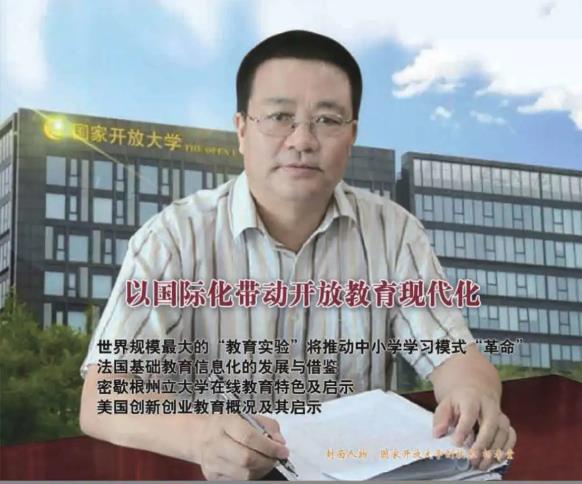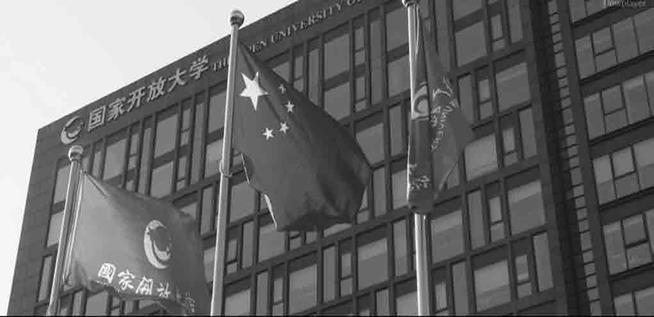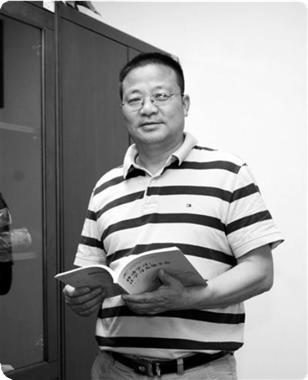 The predecessor of the Open University of China (OUC) was China Central Radio and TV University (CCRTVU), which was founded with the advocacy of Comrade Deng Xiaoping in 1979.
The predecessor of the Open University of China (OUC) was China Central Radio and TV University (CCRTVU), which was founded with the advocacy of Comrade Deng Xiaoping in 1979.
Over the past 40 years, the OUC has developed in step with China’s reform and opening up, making historical contributions to popularising higher education and promoting equal access to education. It has gradually become a global role model and an influential mega university that offers Chinese wisdom, Chinese experience, and a Chinese approach to the development of open and distance education around the world. As the country enters a new era, China has accelerated the popularisation of higher education, with the goal of achieving historical leapfrog development in education quality and international competence. Universities have become a major source of innovation-driven development. In February 2019, the Chinese government released China Education Modernisation 2035, which clearly stated the need to accelerate education modernisation, strengthen the fundamental position of education as part of the pursuit of national rejuvenation, and develop education that people are satisfied with. It is hoped that China will have achieved education modernisation by 2035, becoming an educational power that will in turn mean that it has become a human resources power. Standing on this new historical starting point, open universities are undertaking new historical tasks and missions as a specific type of university among the many different models of higher education against the background of an era defined by rapid development and the extensive application of information technology in the field of education. A review of this history will help us to face the future. Faced with globalisation, open universities can only play a leading role in China’s participation in global educational governance and have a better say on the international stage if they strengthen their modernisation efforts.


I. A history of internationalisation in university operation
According to Philip G. Altbach, a well-known American scholar of Comparative Education, educational internationalisation refers to the integration of international, cross-cultural or global content with teaching goals, teaching functions or the teaching implementation process. It can also be defined as “specific policies or measures of a nation, an education system, and an educational institution in response to a global trend.” In this sense, the OUC was established at a time when open universities around the world were rising. This demonstrates China’s higher education response to the global development trend of open education, and is a specific token of the internationalisation of China’s higher education. Since the establishment of CCRTVU, the OUC educational organisation system has experienced three major phases of international development.
The first phase was from its establishment to 1998. In the early stages, China’s radio and TV universities experienced periods of establishment, rapid development, adjustment, and innovation. The development of internationalisation embodied by international exchange and cooperation mainly included studying advanced ideas and experience from abroad by sending visiting scholars to foreign universities, inviting foreign professors to give classes for courses such as This is English, and introducing advanced courses from overseas, such as Marketing and two other commercial courses that were offered together with San Francisco State University. The above methods were characteristic of international exchange and cooperation during this phase and can be summarised as “importation” and “absorption.”
The second phase was from 1999 to 2009. Firstly, the Ministry of Education gave approval for CCRTVU to implement the “Pilot Reform of Learner Development Model and Open Education” project. This symbolised the transformation from radio and TV universities to open universities. By this stage, operation models were more open and teaching was moving from radio and TV to new information technologies and media, including the internet. Meanwhile, higher education was more involved in international exchange and cooperation due to China’s entry into the World Trade Organisation. The internationalisation of open and distance education increased further to include more cooperation on course resources and research based on the first period of “importation” and “absorption.” In 2002, CCRTVU launched the Ying Yu Tong website to serve English learning in cooperation with the British Council and the British Broadcasting Corporation (BBC). In 2003, it conducted a joint research project on distance education and community education with Colorado Mountain College. In 2005, the world’s first Online Confucius Institute was established together with Michigan State University to provide online Chinese language teaching and courses on Chinese culture. Since 2007, it has offered online courses such as Learner Support, Online Learning Tutoring, and Online Course Design in cooperation with the Open University, UK to train open and distance education professionals. The people who received training came from many different fields, including national open and distance education institutions and enterprises. The characteristics of international exchange and cooperation in this period can be summarised as a purposeful “introduction,” laying a foundation for going global.
The third phase started with the preparation for the establishment of the OUC in 2010 and then extended from its official unveiling in 2012 and up to now. During this period, the Chinese government enacted a series of favourable policies for exchange and cooperation in the field of education. For example, Outline of China’s National Plan for Medium and Long-term Education Reform and Development (2010-2020) promulgated in 2010, the Belt and Road Initiative implemented in 2015, China Education Modernisation 2035, and Implementation Plan to Accelerate the Advancement of Education Modernisation 2018-2022 published in 2019 have all broadened the policy space for the international development of open education. The OUC organisation system has been enthusiastic in pursuing international exchange and cooperation. Overseas study centres have been established in countries along the route of the Belt and Road initiative, including study centres built with overseas Chinese funded enterprises, foreign open universities, and overseas Chinese organisations to popularise Chinese language and culture, to train staff in Chinese enterprises, and to enrol students for degree education. The OUC founded Huaqiao College to carry out educational activities for overseas Chinese in cooperation with local federations of returned overseas Chinese. China international influence also grew during this period, and more and more countries and international organisations have come to China to seek cooperation, and to learn about the OUC's educational and operational experience as a mega university. The characteristics of international exchange and cooperation in this period can be summarised by the terms “exportation” and “going global.”

II. The exploration and practice of internationalisation
Since its launch in 2012, the OUC has identified internationalisation as one of the five major tenets of university operation and explicitly put forward its objective to “build the OUC into a first-class global open university.” After several years of development, achievements have been made in the following fields.
The first is the exploration of overseas operation. With the implementation of the national Belt and Road Initiative, in 2016, the OUC proposed a construction plan for overseas study centres as part of the “going global” strategy of vocational education. Just over three years later, five overseas study centres have been built in Zambia, Tanzania, Pakistan, Malaysia, and Papua New Guinea. In addition, the establishment of another four overseas study centres in Kazakhstan, Indonesia, Thailand, and Tajikistan is under way. Of these, the overseas study centre in Zambia founded jointly by the OUC and the China Non-Ferrous Metals Industry Association is the most representative. The local Chinese funded enterprises hope to train local staff by relying on the OUC’s advantages in online teaching. In 2019, Chinese language was included in Zambia's national examination system, giving Chinese language training and teaching great space for development. The OUC has designed and developed a series of books called Industrial Chinese for the training of local staff, and progress has been made in the initial exploration of overseas school operation.
The second is to try conducting research in the field of open education with international partners. The OUC’s progress over the past 40 years has synchronised with 40 years of reform and opening up. In the beginning, we had some knowledge and understanding of open universities around the world, but had never done any comprehensive or systematic research on them. As such, we were restricted in terms of our vision, level, and value orientation and had some different views on many issues. To this end, Case Studies on World Open Universities was launched in 2013, and the OUC selected 30 representative open universities in Asia, Europe, Africa, and America for study. The research is dominated by description and supported by analysis with a view to understanding the characteristics, trends, and practices of open universities around the world. They have enriched the understanding of open universities as a new type of university in domestic distance education and higher education circles, and also promoted the construction and development of the OUC. The International Council for Open and Distance Education (ICDE) praised the case studies, saying that they have “filled a research gap in the field of world open and distance education and can serve as a reference for the rest of the world.” On the occasion of the establishment of the OUC’s 40th anniversary, we also conducted research on the development of open and distance education during the 40 years of reform and opening up in China. We composed works including Forty Years of Higher Education in China, The One Hundred Words of Open Education, and A Comparative Study of Open Education Around the World.
The third is to actively carry out international cooperation on degree education. After 40 years of development, the OUC has gradually completed its historical mission of providing compensatory degree education and undertaken its other historical mission of building a lifelong learning society. Thanks to social progress and scientific development, open education students have increasingly complex demands for higher degree. In order satisfy the needs of the students, the OUC has taken the initiative to explore postgraduate cooperation projects in the field of open education with Germany, Malaysia, and other countries, with the aim of offering quality education resources and projects to students with the need for higher-level degree education.
The fourth is to take an active part in various kinds of international exchange and cooperation activities created by international organisations in the field of distance and open education, and participate in global education governance. As a member of the executive committee of the Asian Association of Open Universities (AAOU) and the International Council for Open and Distance Education (ICDE), the OUC has offered Chinese wisdom and solutions to the development of the open and distance education around the world. In 2017, the OUC was awarded the sole ICDE Institutional Prize of Excellence at the ICDE annual conference held in Toronto, Canada.
An analysis of the above phases shows that the OUC and its organisation system have taken a steady, gradual route in the process of internationalisation. By starting by borrowing advanced foreign experience and gradually proceeding to offering Chinese wisdom for global education governance and building a shared community for the future of mankind, the quality of open education has continually improved, and a more open institutional system that is full of vitality, efficient, and beneficial to scientific development is being shaped every day.